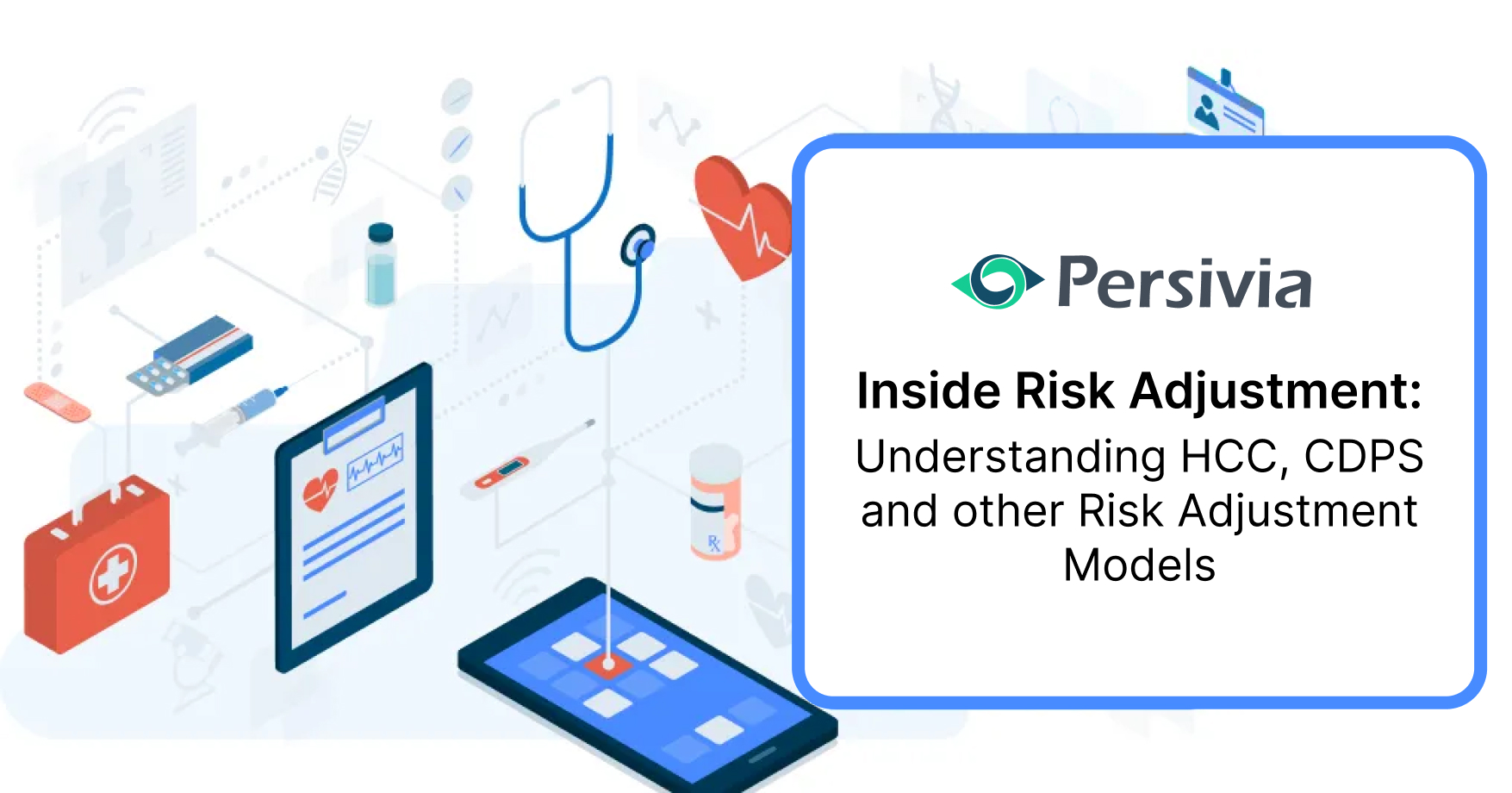In today’s complex healthcare landscape, understanding how costs are predicted and distributed is crucial for healthcare providers and beneficiaries. While intricate, risk adjustment models in healthcare serve as the backbone of the industry’s financial planning.
Let’s break down these sophisticated systems into understandable components and explore their vital role in healthcare delivery.
The Foundation: What Are Risk Adjustment Models?
Healthcare risk adjustment models are sophisticated statistical tools that fundamentally predict healthcare costs for individuals based on their unique characteristics. Think of them as financial forecasting systems that consider factors about a person—age, medical history, existing conditions—to anticipate their healthcare needs and associated costs.
Key Players in the Risk Adjustment Landscape
The Medicare Framework: CMS-HCC Model
The Centers for Medicare & Medicaid Services Hierarchical Condition Categories (CMS-HCC) model is one of healthcare’s most widely implemented risk adjustment systems. This model explicitly targets Medicare Advantage programs, where accuracy in cost prediction is crucial.
Recent developments in 2024 have brought significant changes to the CMS-HCC framework:
• An expansion from 86 to 115 distinct HCCs
• Comprehensive remapping of diagnostic codes
• Refined payment adjustments, resulting in an average 3.56% decrease in risk-adjusted payments
Medicaid’s Approach: The CDPS System
The Chronic Illness and Disability Payment System (CDPS) addresses the unique needs of Medicaid beneficiaries. This system particularly excels in evaluating healthcare needs for:
• Low-income families
• Children requiring specialized care
• Pregnant women
• Elderly individuals
• People with disabilities
An enhanced version, CDPS+Rx, incorporates prescription data to create more comprehensive risk assessments, offering a fuller picture of patient health needs and potential costs.
The Affordable Care Act (ACA) Marketplace: HHS-HCC Model
The Health and Human Services Hierarchical Condition Categories (HHS-HCC) model adjusts real-time risk to the ACA marketplace. Unlike its Medicare counterpart, this model:
• Evaluates current-period diagnoses
• Covers all age groups
• Includes specialized categories like high-risk obstetric care
Helps balance costs between insurance plans, making coverage more affordable for those with higher health needs.
The Mechanics Behind Risk Scoring
Risk adjustment models translate medical complexity into numerical values through a systematic process:
- Diagnosis Coding: Medical professionals document conditions using ICD-10-CM codes
- Risk Translation: These diagnoses map to specific risk categories
- Score Calculation: Demographic factors combine with health status to generate risk scores
- Payment Adjustment: Final scores influence resource allocation and payments
Persivia’s Comprehensive Risk Adjustment Solution
Persivia’s CareSpace® platform delivers a comprehensive risk adjustment solution by seamlessly integrating data from diverse sources including EHRs, EMRs, claim files, laboratory results, pharmacy data, and patient-generated device information. Its sophisticated patient matching system enhances this robust integration capability, which creates and maintains longitudinal patient records (LPR) that support multiple risk adjustment models including HHS-HCC, CMS-HCC, and CDPS. Through its EHR-agnostic tool, CareTrak®, the platform provides real-time insights and HCC opportunities directly at the point of care. At the same time, its advanced NLP technology analyzes clinical notes to identify and extract critical information, ensuring proper documentation of conditions according to MEAT criteria.
The platform’s comprehensive capabilities extend to support the latest CMS HCC Model V28 and RADV audit requirements while incorporating integrated clinical workflows and sophisticated risk stratification. By leveraging AI, CareSpace® analyzes the consolidated patient data to identify high-risk individuals and potential care gaps, enabling healthcare organizations to optimize both clinical outcomes and financial performance. This technology transforms
complex healthcare data into actionable insights, allowing providers to make informed decisions about patient care and risk management strategies.
Conclusion
Risk adjustment in healthcare is about getting the right resources to patients at the right time. As healthcare continues to evolve, the role of technology becomes increasingly vital in making this happen.
By bringing together scattered health information, uncovering hidden insights in clinical notes, and using innovative technology to spot potential risks, comprehensive platforms like CareSpace® help healthcare organizations work more effectively. They bridge the gap between understanding patient needs and delivering appropriate care.
When healthcare organizations can better understand their patient populations, they can better plan their resources, focus their efforts, and ultimately deliver better care. Technology solutions that support all risk adjustment models – from Medicare to Medicaid to ACA markets – play a crucial role in making this possible.
Table of Contents
